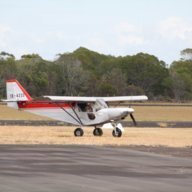From the Nurflugel site:
NACA paper by Zimmerman on the subject (1929), where he presents wind tunnel force measurements for a series of low aspect ratio wings. Each wing model was composed of a straight and rectangular center section, to which two kinds of wingtips could be attached: with "square" or with semicircular planforms. Zimmerman progressively reduced the span of the center section, until it reached zero. Obviously, in that condition only the wingtips remained, directly attached to each other and forming a circular planform wing in the case of "round" wingtips. Apparently "by accident", he noticed that the circular wing developed a maximum lift much higher than that for other aspect ratios, either with round or square tips. I may not remember the exact numbers (I don't have the paper here right now), but I think CLmaxpeaked from a bit more than1.0 for the other AR's to almost 2.0 for the circular wing, that is, maximum lift almost doubled. We're talking about Clark Y airfoils, under low Reynolds conditions in 1929."



